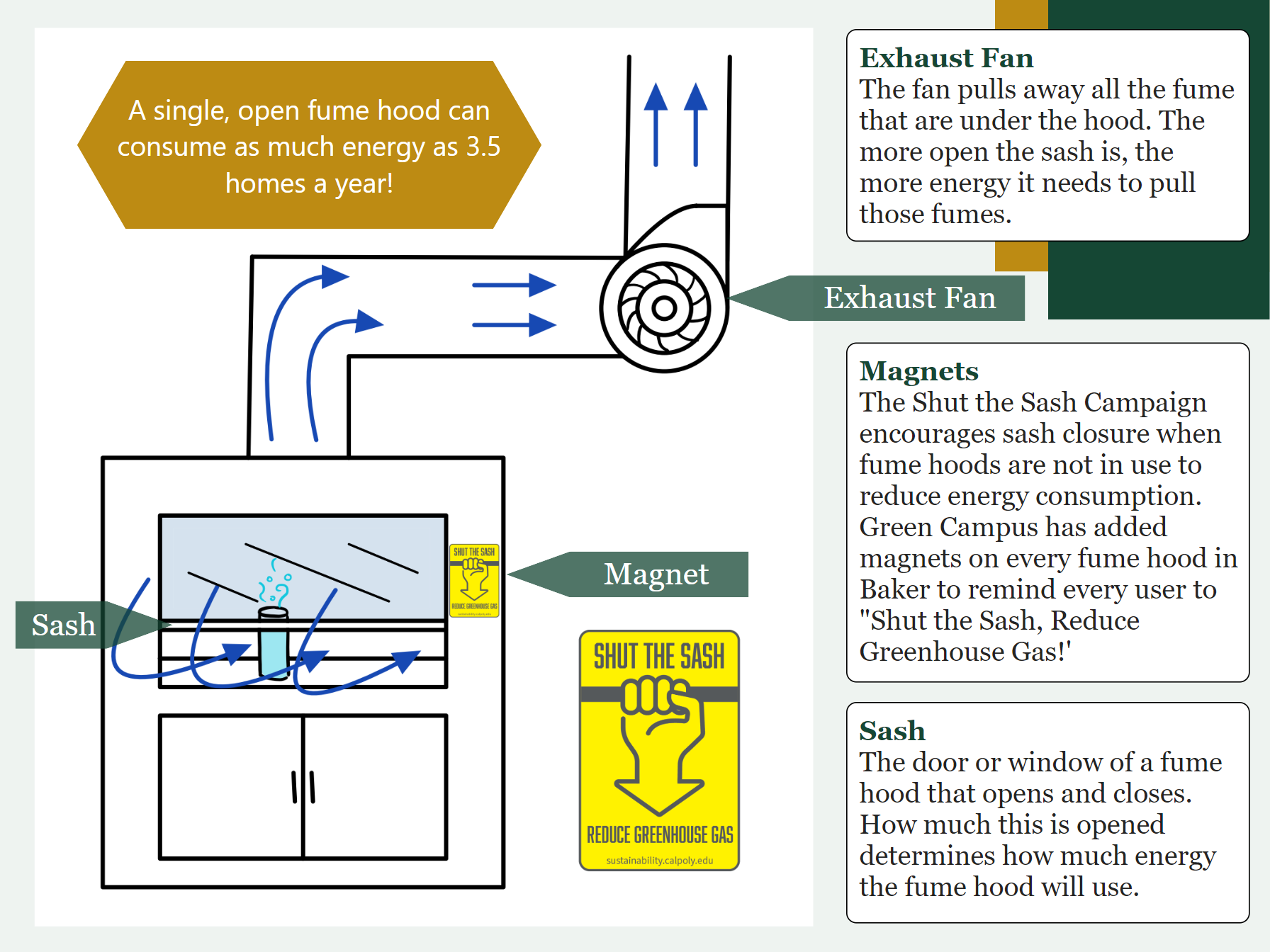The Shut the Sash campaign aims to educate students and researchers about the importance of shutting the sash on fume hoods in the Baker Center for Science building. When the sashes are left open, each fume hood can consume as much energy as 3.5 homes. Therefore, closing sashes when fume hoods are not in use is an important step in reducing energy waste as well as greenhouse gas emissions. As a reminder, Cal Poly Green Campus has placed magnets on each fume hood in the building to encourage users to “Shut the Sash, Reduce Greenhouse Gas.”
What is a fume hood?
A fume hood is an important ventilation device designed to exhaust harmful chemical gases and vapors from a laboratory space. Students and researchers working with volatile substances must handle these chemicals under a fume hood which has a glass sash that can be opened to any height. In Baker, the height of this sash directly relates to the volume of air that is vented through the fume hood. These types of hoods are known as variable air volume (VAV) hoods.
How do fume hoods waste energy?
When a sash is left open, the fume hood continues to draw large volumes of conditioned air from a lab. The quantity of air drawn in depends on the height of the sash: the higher the sash, the more air is vented. This presents an issue because the process of moving and conditioning outdoor air expends a lot of energy. Thus, air that has been heated or cooled for the comfort of the building’s occupants is exhausted back into the environment and energy is wasted. Additionally, the higher a sash is left open, the harder the exhaust fans must work to move the necessary volume of air, consuming even more energy. Therefore, the Shut the Sash campaign encourages students and researchers to close fume hood sashes when they are not in use. Reducing the energy consumption of the lab spaces in Baker can significantly reduce the amount of greenhouse gas emitted in the production of electrical energy.
Is it safe to shut the sash?
From a lab safety standpoint, fume hoods are most effective when the sash is as low as possible when working. This prevents the escape of dangerous gases and vapors from the fume hood into the general laboratory space. Additionally, even when a fume hood is completely closed, there is still some air flow to allow for the continuous venting of fumes if chemicals are left in the hood. Thus, it is safe to shut the sash when a fume hood is not in use.
To learn about the impact of the Shut the Sash pilot program, view the campaign report.

